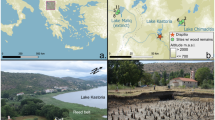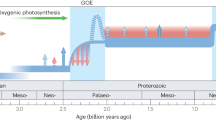Abstract
IN a recent communication1, Ahrens reported some data on the frequency distribution of some of the elements in igneous rocks, and enunciated a geo-chemical law to the effect that the concentration of an element in a specific igneous rock is lognormally distributed. Observations have been made at the Fuel Research Station of the Department of Scientific and Industrial Research on the trace elements in coals and coal ashes. Our data, although applying to this special type of sedimentary material, have suggested certain considerations which appear to be relevant to the subject of Ahrens's communication.
This is a preview of subscription content, access via your institution
Access options
Subscribe to this journal
Receive 51 print issues and online access
$199.00 per year
only $3.90 per issue
Buy this article
- Purchase on Springer Link
- Instant access to full article PDF
Prices may be subject to local taxes which are calculated during checkout
Similar content being viewed by others
References
Ahrens, L. H., Nature, 172, 1148 (1953).
Author information
Authors and Affiliations
Rights and permissions
About this article
Cite this article
AUBREY, K. Frequency Distribution of the Concentrations of Elements in Rocks. Nature 174, 141–142 (1954). https://doi.org/10.1038/174141a0
Issue Date:
DOI: https://doi.org/10.1038/174141a0
Comments
By submitting a comment you agree to abide by our Terms and Community Guidelines. If you find something abusive or that does not comply with our terms or guidelines please flag it as inappropriate.



